What is DIN Standard?
What is DIN Standard? General Information, Applications, Types, Technical Details, Dimensions and Tolerances, Chemical and Mechanical Properties, Certification
DIN, which stands for Deutsches Institut für Normung (German Institute for Standardization), is an influential organization in the field of international standards. Established in 1917, DIN plays a significant role in the development, implementation, and improvement of standards used in various industrial sectors in Germany. In this article, you will find detailed information about the general aspects of DIN standards, their applications, types, technical details, dimensions and tolerances, chemical and mechanical properties, as well as the certification process. Whether you are a professional in the industry or simply curious about DIN standards, this article aims to provide you with a comprehensive overview.
What is DIN Standard?
These standards are a set of technical specifications that define the quality, safety, and reliability requirements for various products, processes, and systems. They are developed by experts in the respective fields and are widely recognized and used in Germany and internationally. DIN standards cover a wide range of industries, including engineering, manufacturing, construction, automotive, and more. These standards ensure interoperability, compatibility, and efficiency in industrial practices, promoting innovation, quality, and market competitiveness.
Applications of DIN Standards:
These standards find applications in numerous industries and sectors. They provide guidelines and requirements for product design, manufacturing processes, testing methods, and quality control. For example, in the automotive industry, DIN standards define the specifications for components such as fasteners, electrical connectors, and safety systems. In construction, DIN standards specify the requirements for materials, structural design, and building codes. Moreover, DIN standards are crucial in areas like mechanical engineering, electrical engineering, chemical processing, and telecommunications.
Types of DIN Standards:
These standards are categorized into different types based on their scope and purpose. Here are some commonly used types of DIN standards:
DIN EN Standards:
These standards are harmonized with European (EN) or international (ISO) standards to ensure consistency and compatibility across borders. They cover a wide range of industries and are widely adopted throughout Europe.
- DIN ISO Standards: These standards are developed in collaboration with the International Organization for Standardization (ISO) and are recognized globally. They facilitate international trade and promote best practices in various fields.
- DIN SPEC: DIN SPEC’s are documents that are developed rapidly to address emerging technologies, market demands, or innovative solutions. They provide temporary specifications until formal standards are established.
- DIN Handbook: DIN Handbooks offer comprehensive technical information, guidelines, and recommendations for specific industries or subject areas. They serve as valuable references for professionals and practitioners.
Technical Details, Dimensions, and Tolerances:
These standards provide detailed technical specifications for products and processes. They define parameters such as dimensions, tolerances, material properties, surface finishes, and performance requirements. These specifications ensure that products meet the desired quality, functionality, and safety criteria.
Chemical and Mechanical Properties:
DIN standards also include information regarding the chemical and mechanical properties of materials. They specify the composition, strength, hardness, corrosion resistance, and other characteristics necessary for selecting appropriate materials for specific applications. By adhering to DIN standards, manufacturers can ensure the desired performance and reliability of their products.
Certification Process:
To demonstrate compliance with DIN standards, manufacturers can obtain certification through accredited certification bodies. Certification involves a thorough assessment of the products, processes, and quality management systems to ensure conformity with the relevant DIN standards. Obtaining DIN certification enhances the credibility of manufacturers and instills confidence in customers and stakeholders.
Conclusion:
DIN standards play a vital role in various industries, providing guidelines and specifications for products, processes, and systems. They promote consistency, interoperability, and safety, fostering innovation, quality, and market competitiveness. Whether you are a professional in the industry or a consumer, understanding DIN standards can help you make informed decisions and ensure the reliability and quality of the products you use.
“Examples of Steel Pipes Manufactured According to DIN Standard”
- 2448 Seamless Steel Pipes: 2448 is a standard that specifies the dimensions and technical requirements for seamless steel pipes used in general engineering purposes. These pipes are commonly used in industries such as construction, machinery, and automotive. They are known for their precision in dimensions, high tensile strength, and excellent resistance to pressure and corrosion. DIN 2448 seamless steel pipes are available in various grades and sizes to meet different application needs.
- 1629 St52.0 Steel Pipes: 1629 is a standard that covers non-alloy steel tubes used in applications requiring high tensile strength and resistance to extreme conditions. St52.0 is a grade of steel commonly found in DIN 1629 steel pipes. These pipes are known for their excellent weldability, impact resistance, and dimensional accuracy. They are widely used in industries such as oil and gas, petrochemical, and power generation.
- 17175 Heat-Resistant Steel Pipes: 17175 specifies the technical delivery conditions for seamless steel pipes used in elevated temperature service. These pipes are designed to withstand high temperatures and pressure, making them suitable for applications in boilers, heat exchangers, and power plants. The heat-resistant steel pipes produced according to DIN 17175 exhibit excellent thermal stability, corrosion resistance, and mechanical strength at elevated temperatures.
- EN 10216-2 P235GH Steel Pipes: EN 10216-2 is a European standard that specifies the technical delivery conditions for seamless steel pipes used in pressure purposes. P235GH is a grade of steel commonly used in these pipes. They are characterized by their good weldability, high strength, and excellent formability. EN 10216-2 P235GH steel pipes find applications in industries such as oil and gas, chemical, and manufacturing.
Steel pipes produced according to DIN offer reliability, performance, and compliance with stringent industry requirements. DIN 2448, DIN 1629, DIN 17175, and DIN EN 10216-2 are just a few examples of the standards that ensure the quality and suitability of steel pipes for various applications. Understanding these examples provides valuable insights into the types and characteristics of steel pipes that conform to DIN standards.

